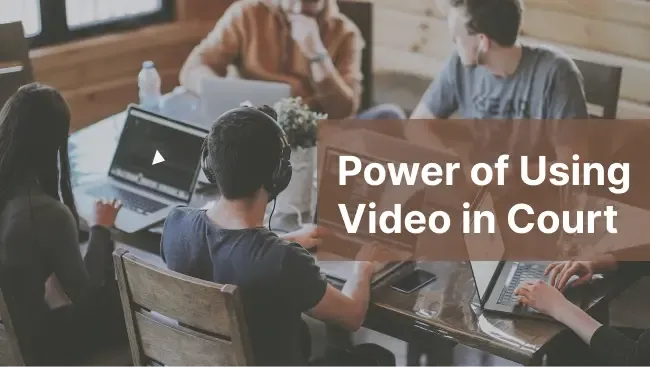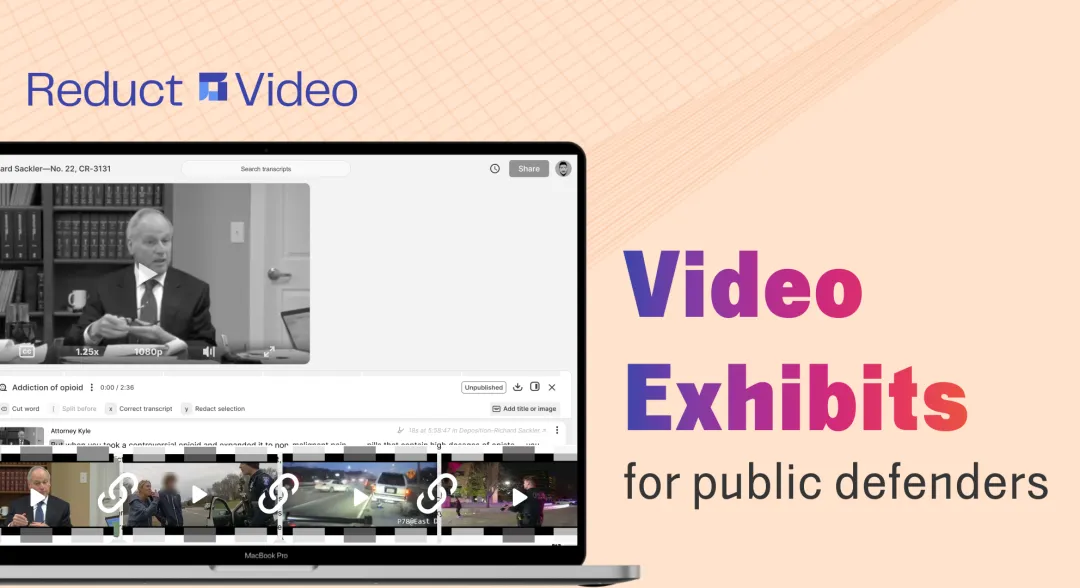Cut Down Audiovisual Discovery Review Time & Uncover the Truth with Synchronized Multicam View
September 2025
·
2 min read

It’s common for multiple police officers to respond to an incident. Each officer's body camera captures a unique perspective, but every new camera angle means more video public defenders have to watch and analyze.
AI-based synchronization tools like Reduct.Video can take all that footage, synchronize the events, and show the entire scene on one screen to give you the full picture of what really happened.
Let’s explore some scenarios where this can save time, clarify what really happened, and ensure justice.
1. Routine DUI stops
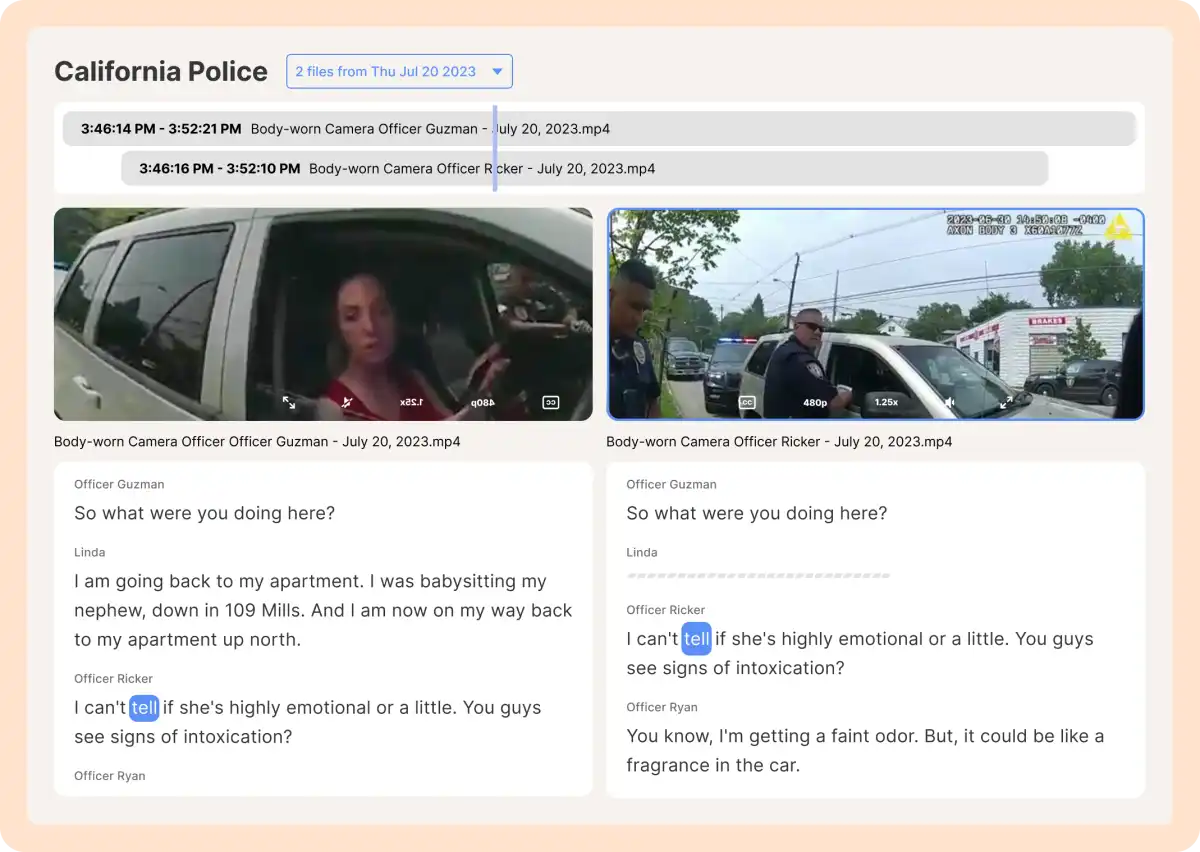
At a DUI checkpoint, four officers are interviewing a driver. Each officer's body cam captures overlapping but slightly different footage—one records the driver’s face, another focuses on the car interior, and others just capture the scene from various angles. Traditionally, reviewing this footage would take four hours, watching basically the same interaction from each camera's perspective. But with synchronized playback, you can watch all angles simultaneously in just one hour. This efficiency not only saves time but ensures that no critical detail is overlooked.
2. Monitoring officer behavior
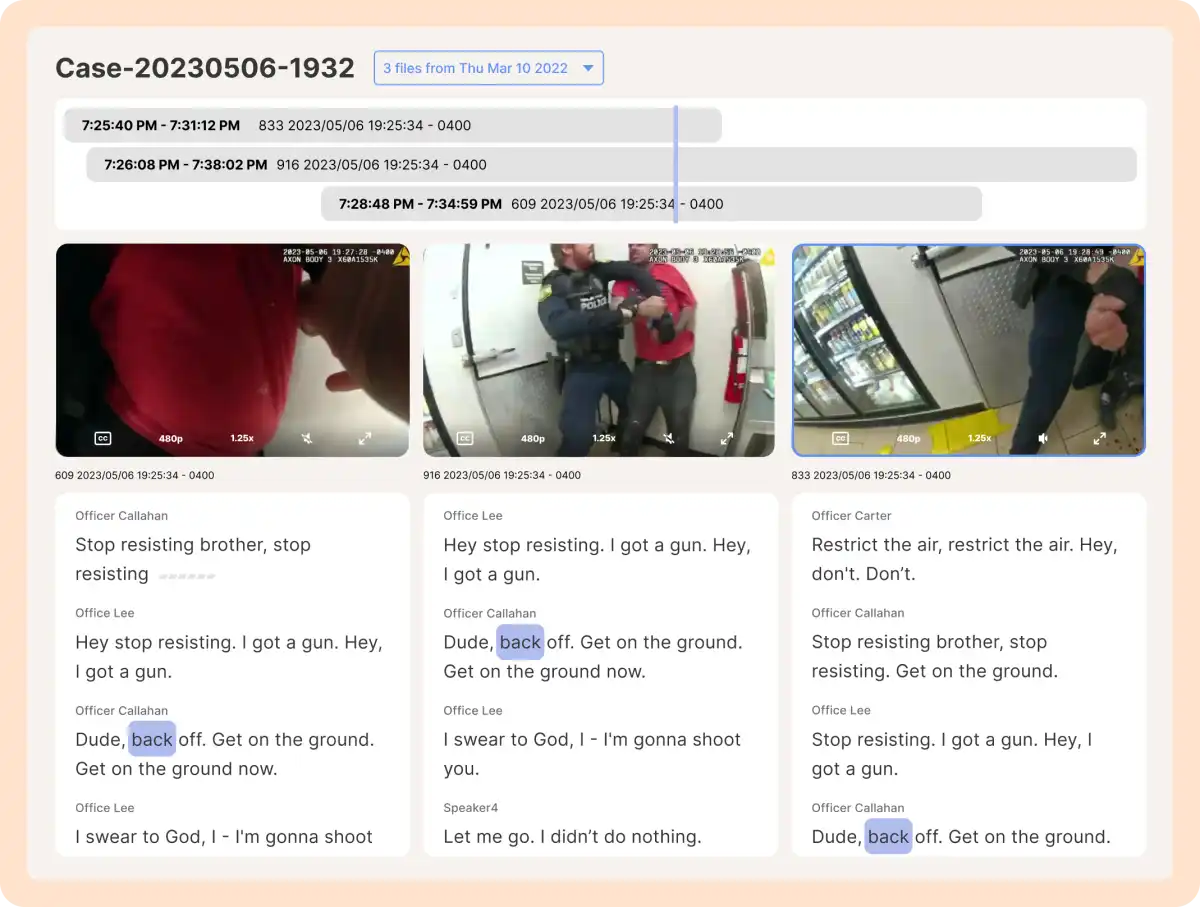
In high-stakes situations, such as heated exchanges or physical altercations, you want a clear picture of the officers’ actions. For instance, hearing an officer give commands while simultaneously watching their body language from another officer’s perspective provides clarity. Having multiple perspectives helps attorneys assess whether protocols were followed.
3. Guns drawn

When weapons are drawn, every second matters. However, body cameras often capture obstructed views—hands covering lenses or chaotic movement obscuring the scene. With synchronized footage from multiple cameras, it’s easier to piece together what actually happened during these tense moments. This clarity is invaluable for investigations and courtroom presentations.
4. Car searches: Tracking discovery
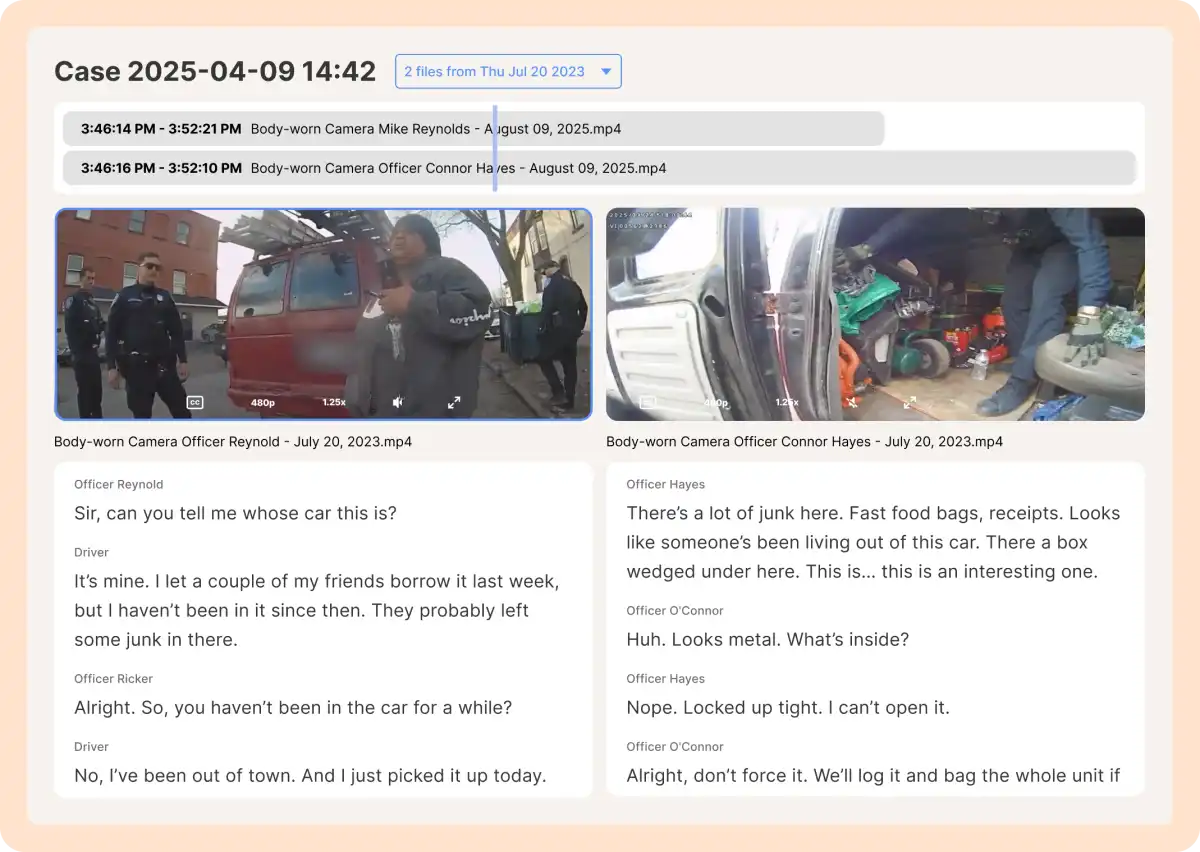
During vehicle searches, understanding what was discovered where—and when—is crucial to the case. For example, one officer might find contraband while another reacts to it moments later. Watching synchronized footage reveals the sequence of events clearly and eliminates guesswork about who was responsible for key discoveries.
5. Using all the angles: Proving the truth
Sometimes, the truth lies in the details visible only through multiple perspectives. Consider two cases:
- In one, a bag moves between individuals during an incident. Tracking its movement across cameras helps establish ownership or intent.
- In another case, someone is accused of spitting on an officer. By reviewing all angles, investigators confirm that the officer was not in fact spit on—clearing up false accusations.
How it works
This seamless synchronization is made possible by tools like Reduct.Video’s Timeline View and Multicam Sync features. The tools automatically align footage based on timestamps, metadata and the common words in the footage transcripts so that you can review incidents across angles effortlessly.
Hundreds of public defenders across the US are already using Multicam to find key moments buried in hours of discovery, and winning cases!
